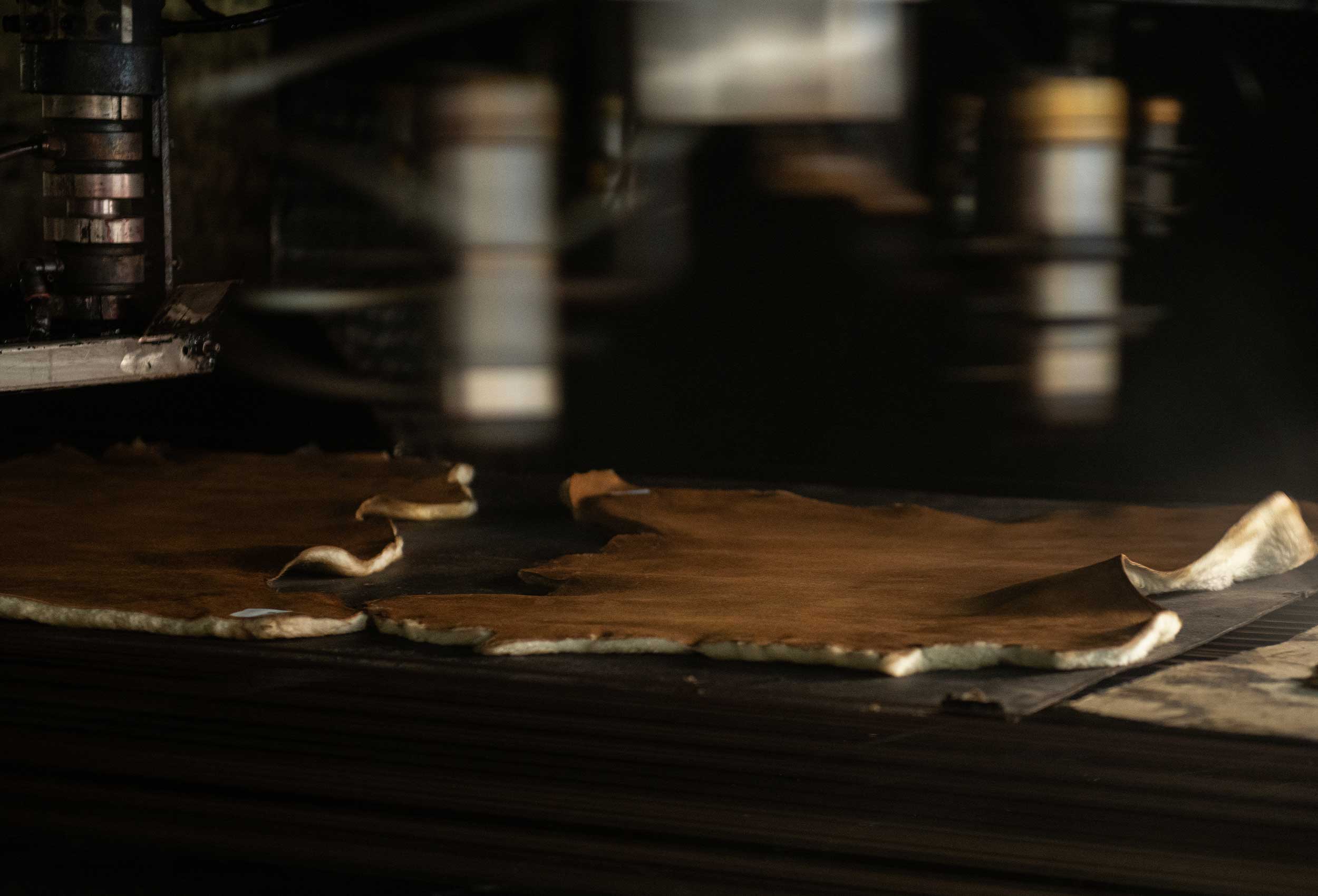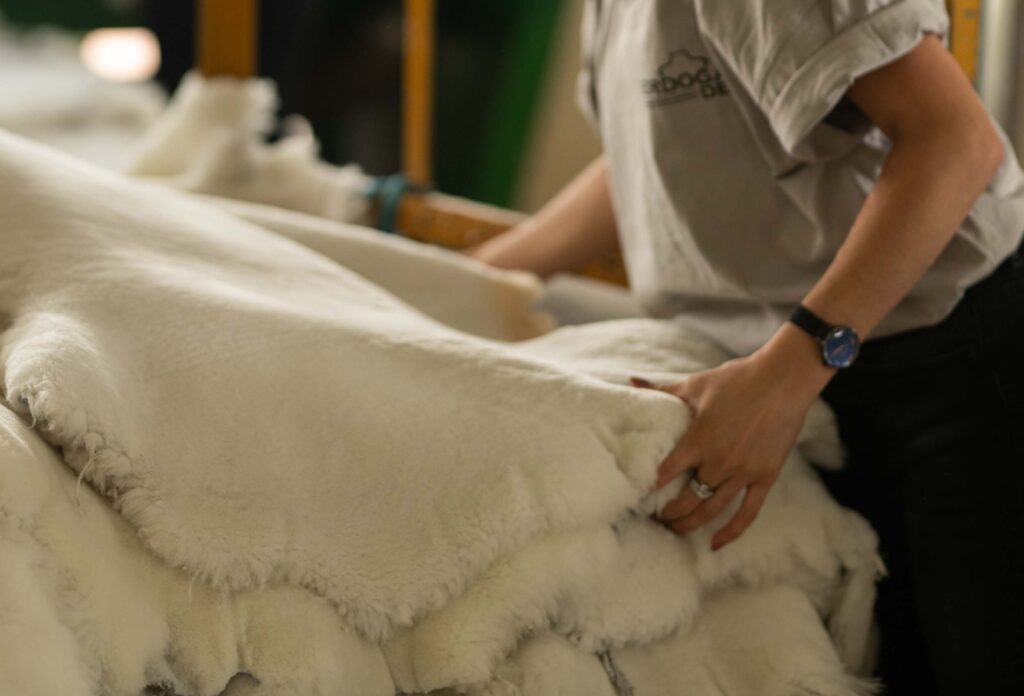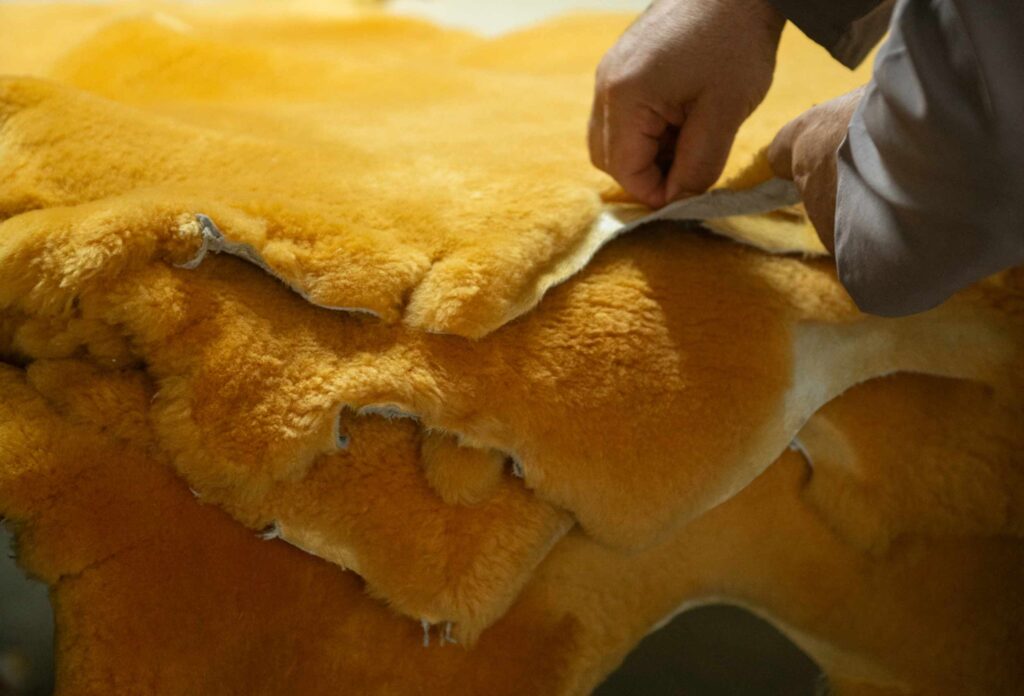
14 Nov What is the difference between sheepskin and shearling?
Nowadays, increasing demand the sheepskin and shearling. It is crucial knowing the difference between them. With regard to this, natural eco-friendly materials like genuine sheepskin and shearling skin stand out in the quest for sustainability. These natural materials, which have found a place in human life for centuries with their comfort, durability and aesthetic features, attract attention with their environmentally friendly structures as well as the insulation and comfort they provide. With their wide range of uses from traditional to modern, sheepskins and shearling gain value as one of the important parts of an environmentalist approach. So, if you’re curious about the differences that set these products apart, we have outlined the answers below.

There are significant differences between genuine sheepskin and shearling according to usage area and their material features. The obvious difference depends on the age of animals. Thus, shearling leather comes from young lambs, while sheepskin leather comes from mature sheep. In these two types of skin, the material structure differs depending on the age of the animal. Shearling is more supple and soft texture, thanks to the natural fats found in the lamb’s skin.

While shearling is generally coarser and tougher than shearling, shearling is tanned without degrading the natural wool, resulting in a product that is less stiff and more fabric-like in texture. However, if you are looking for a material that is more water-resistant than soft, then natural sheepskin is a better choice. Although the material properties are quite satisfactory for both materials, there is a cost difference between the two products due to production differences.
If we change our perspective a little bit and touch upon the usage areas of these two materials. Since sheepskin is harder, thicker and less water permeable in terms of leather structure and less costly in terms of price, Sheepskin is preferred in the production of thin seasonal jackets, gloves, boots and shoes where its waterproof feature comes to the fore. Shearling is generally used in accessories and clothing items that require fine workmanship such as jackets, gloves, bags, which are mostly used in the luxury consumption sector.

In conclusion, sheepskin and shearling are two natural materials that have gained a special place in different areas of use thanks to their breathable fabric textures, durability and aesthetic features. Sheepskin, with its thick and durable structure, is mostly used in winter clothing, furniture coverings and outdoor use, while shearling is preferred especially in fashion products in the luxury segment with its fine and soft texture, superior thermal insulation and elegant appearance. The differences between these two materials are not only limited to aesthetics and usage areas, but also draw attention to their hypoallergenic and sustainable structures. These products, which offer alternatives to protect human health thanks to their environmentally friendly structures, are increasingly preferred by ecologically conscious consumers and are becoming important parts of an eco-friendly life.
FAQ
What is sheepskin leather?
Sheepskin is a form of leather with diverse applications but is used today. Its origins extend back millennia. Sheepskin, commonly known as “shearling,” is leather manufactured from sheepskin with the skin and wool intact.
What is Tannery?
Animal skins can be used to make clothes or items such as furniture only after they have been transformed through chemical treatment, known as tanning, into hydrophilic materials. This is a method that molecularly alters the skin to make it stronger and to stop it from rotting. The procedure may also involve putting color on the hides or changing their texture to stiffen or soften.
What is shearling leather?
Shearling is a skin of a recently shorn sheep that has been tanned and dressed with the wool left on. It has one side that is a suede surface and another that is a clipped fur surface.
